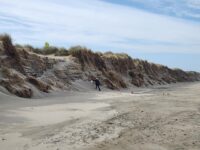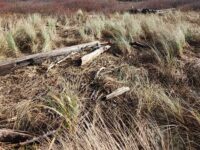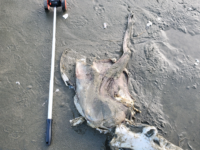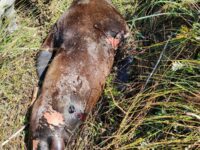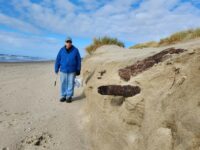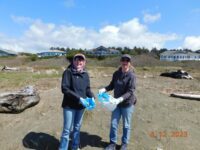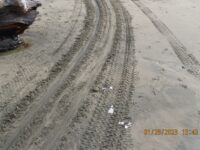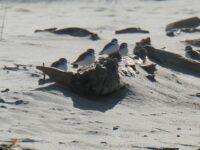Mile 203 Report
Driftwood Beach south, Hidden Lake
July 19, 2019
The major concerns are the number of fires involving the logs that are piled high up on the beach and the quanity of jelly pieces on the beach was much above anything we have ever seen.
Report Details
The major concerns are the number of fires involving the logs that are piled high up on the beach and the quanity of jelly pieces on the beach was much above anything we have ever seen.
Conditions
Temperature: 64 F. Wind Velocity: Strong. Wind Direction: NW. Tide Level: 4.5 feet.
Human Activities
Number of people: 41. Number of dogs: 6. Walking or running: 8. Playing in surf: 6. Playing in sand: 16. Sitting: 7. Other Activities: Looking through spotting scopes - 4. There is only parking for about 3 cars to access the entrances to Mile 203.
Concerns
Fire
Apparent violations: People have made fires where the logs have been pushed up by the high tides. There was minimal litter today. There is a continual issue of people putting their dog feces in a plastic bag and then leaving the bag on the beach for someone else to pick up. Someone has made a sign and posted in at one entrance to mile 203 saying that says "There is no Poo Fairy that will pick up your bags and people should take their pets poo with them". It has not worked so far..Vehicles
Beached Birds
Total dead birds: 1. A Common Murre had recently died on the beach. See picture
Stranded Marine Mammals
Total stranded mammals: 1. There was a dead Harbor Seal pup on the beach a bit over 1/4 mile north of Access 66C. The Vultures have begun their work. See pictures
Dead Fish or Invertebrates
Unusual concentration. There were hundreds of pieces of clear jellies on the beach for a half mile from access point 67A to 66C. The jellies had been chopped up from the wave action. See pictures.
Driftline Content
Seaweeds and seagrass, Shells, Animal casings (e.g., crab, shrimp molt), Wood pieces, Marine debris (plastic, styrofoam, etc. washing in from the sea), Ocean-based debris (from fishing boats, ship trash, etc.). There are a number of kelp pieces that are all the same species. A picture is attached to help with identification. Also the amount of crab shells and claws are much above average. A picture is attached. The litter, trash, plastic, and ocean-based debris in the drift line was a very small amount. As the wind was blowing at about 25 kt, it is possible that the sand had covered many items.
Actions & Comments
I am atttempting to contact the Beach Rangers about the number of fires and the person who seems to have moved in to a log shelter on the beach.
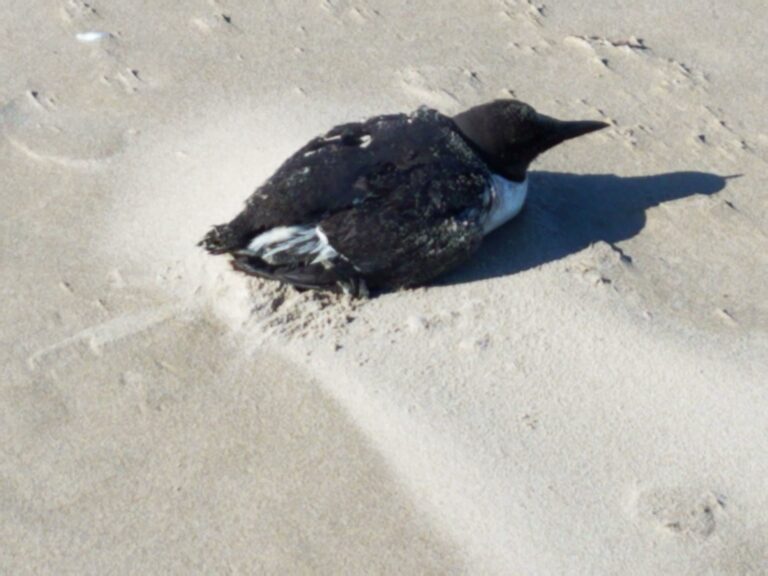
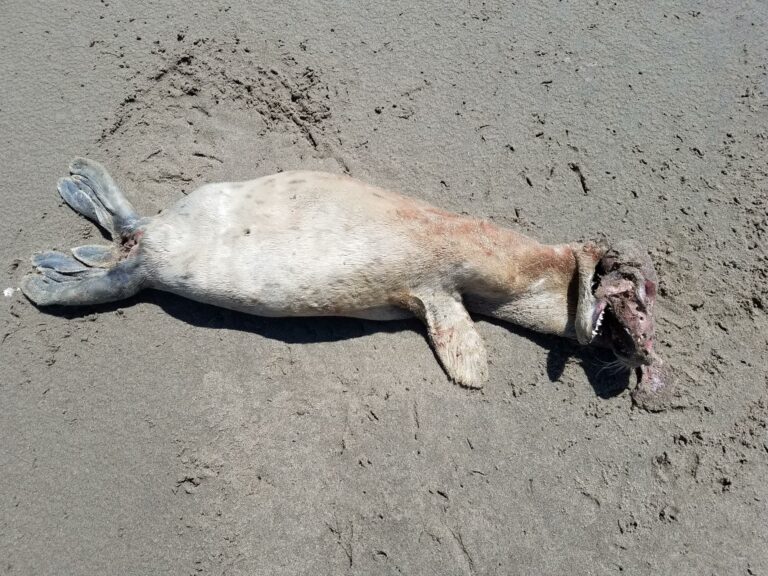
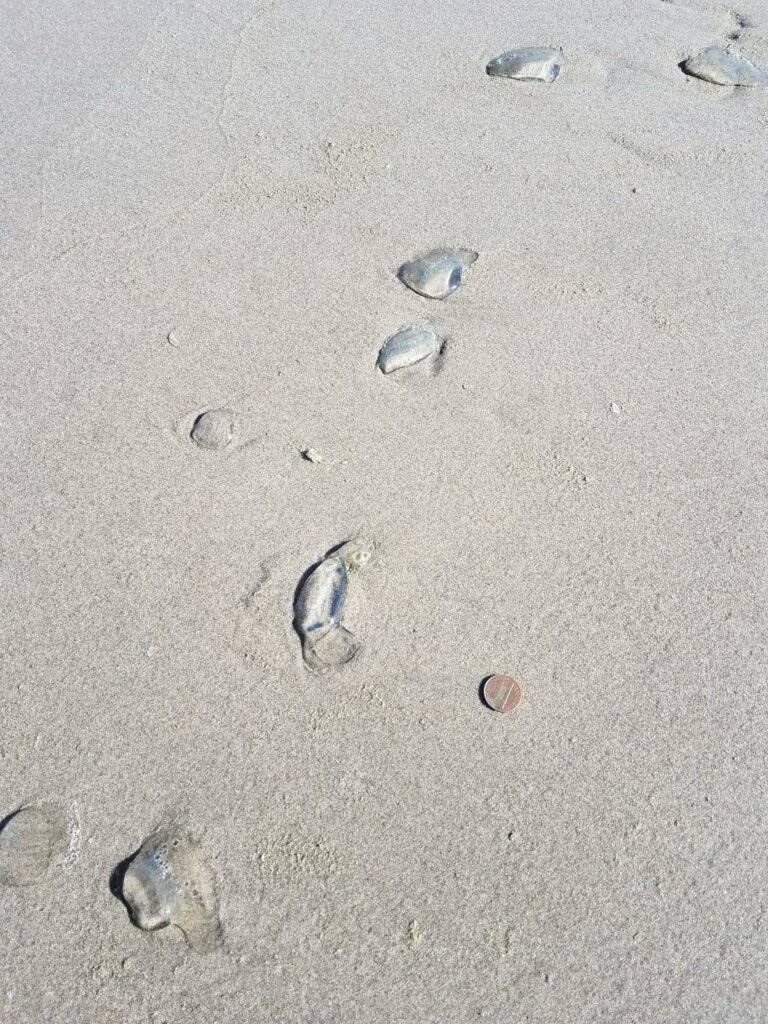
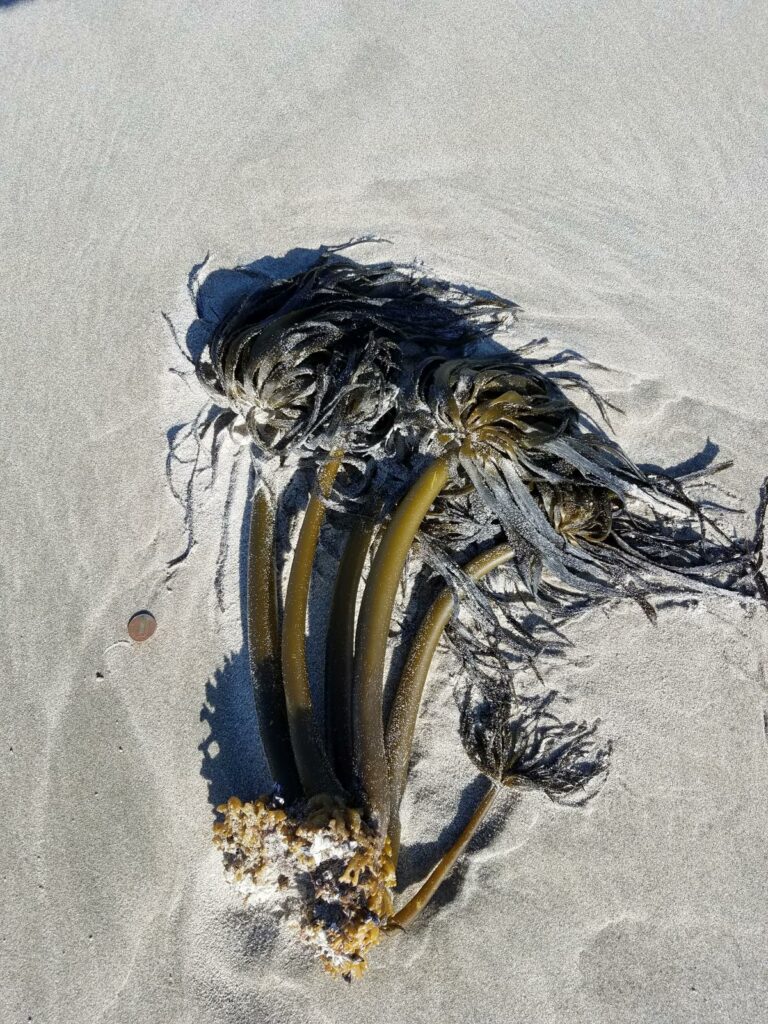
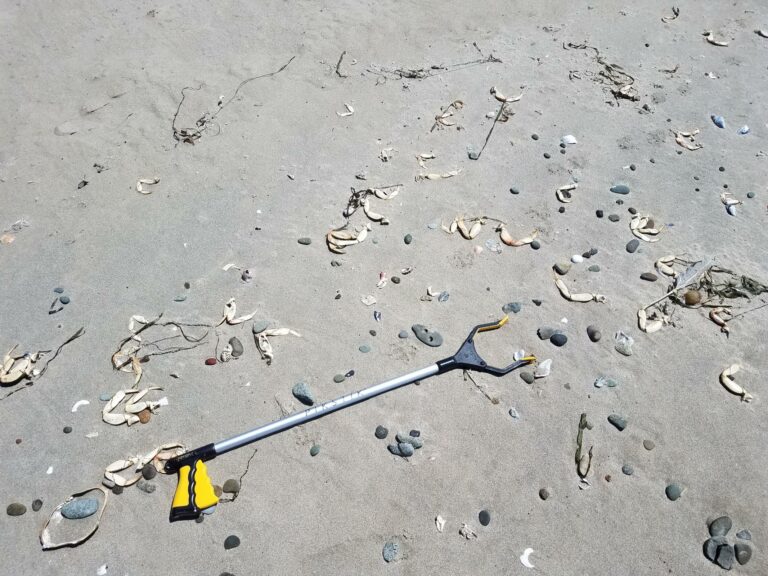
Report Images
All Mile 203 Reports
Mile 203
Driftwood Beach south, Hidden Lake
We found 7 lbs 12 oz of marine and ocean debris on the beaches in the wrackline area. The north and south ends of mile 203 show evidence of substantial wave erosion of the dunes.
Jeff Hildreth
Mile 203
Driftwood Beach south, Hidden Lake
The beach has had substantial washing away of old dunes and washing up of beach grass into the dunes. There were 45 bird carcasses of we believe are Cassin's auklets.
Jeff Hildreth
Mile 203
Driftwood Beach south, Hidden Lake
Today I and my two CoastWatch partners conducted a NOAA Marine Debris survey on our 100 meter survey site at Sandpiper Beach, Mile 203. On reaching our marine debris survey site, we saw a lot of Cassin's Auklet carcasses, which COASST calls CAAU, all high up on the beach among the beach vegetation and washed-in sea grass, many carcasses partially covered by sand or vegetation. After we completed our debris survey, I returned to our survey site and began collecting CAAU carcasses in groups of 9, as COASST recommends, ultimately collecting 40 carcasses in 4 full and 1 partial grouping. Below is a link to our Sandpiper Beach NOAA debris survey site where most CAAUs were found, reached by a boardwalk that enters the beach midway in the debris survey site. COASST defines a "wreck" as more than 20 beached individuals of one species per kilometer, and a "MME" (Massive Mortality Event) as a spike of up to hundreds of carcasses per kilometer. We also found a beached Northern Fulmar and what is I believe was either a female Gadwall or White-winged Scoter, which I took note of but didn't measure or report on to COASST. I submitted documentation with photos of the CAAU beaching event to COASST, and COASST responded that they had received reports of CAAU beachings from Southern Oregon sites like Coquille Point and Cape Blanco but also as far north as Manzanita. All this sounds very dry, but it was really sad to see and handle all these beautiful little dead birds and wonder if this is completely natural or if climate change, and perhaps a decline of prey species making these birds more vulnerable, factors into these mortality events. https://mdmap.
Jon French
Mile 203
Driftwood Beach south, Hidden Lake
The storms and rain caused some beach washout from the ocean and from the land.
JLcoasties
Mile 203
Driftwood Beach south, Hidden Lake
The dunes have reappeared due to the spring winds.
JLcoasties
Mile 203
Driftwood Beach south, Hidden Lake
Last year at this time, Jesse Jones helped us set up a 100 meter NOAA marine debris survey site on Mile 204, which we later moved to Sandpiper Beach on Mile 203.
Jon French
Mile 203
Driftwood Beach south, Hidden Lake
It was a beautiful day for a walk.
Nancy Thomas
Mile 203
Driftwood Beach south, Hidden Lake
After observing 8 snowy plovers on Mile 200 yesterday, I wanted to check up on the plovers on Mile 203.
KFunk

